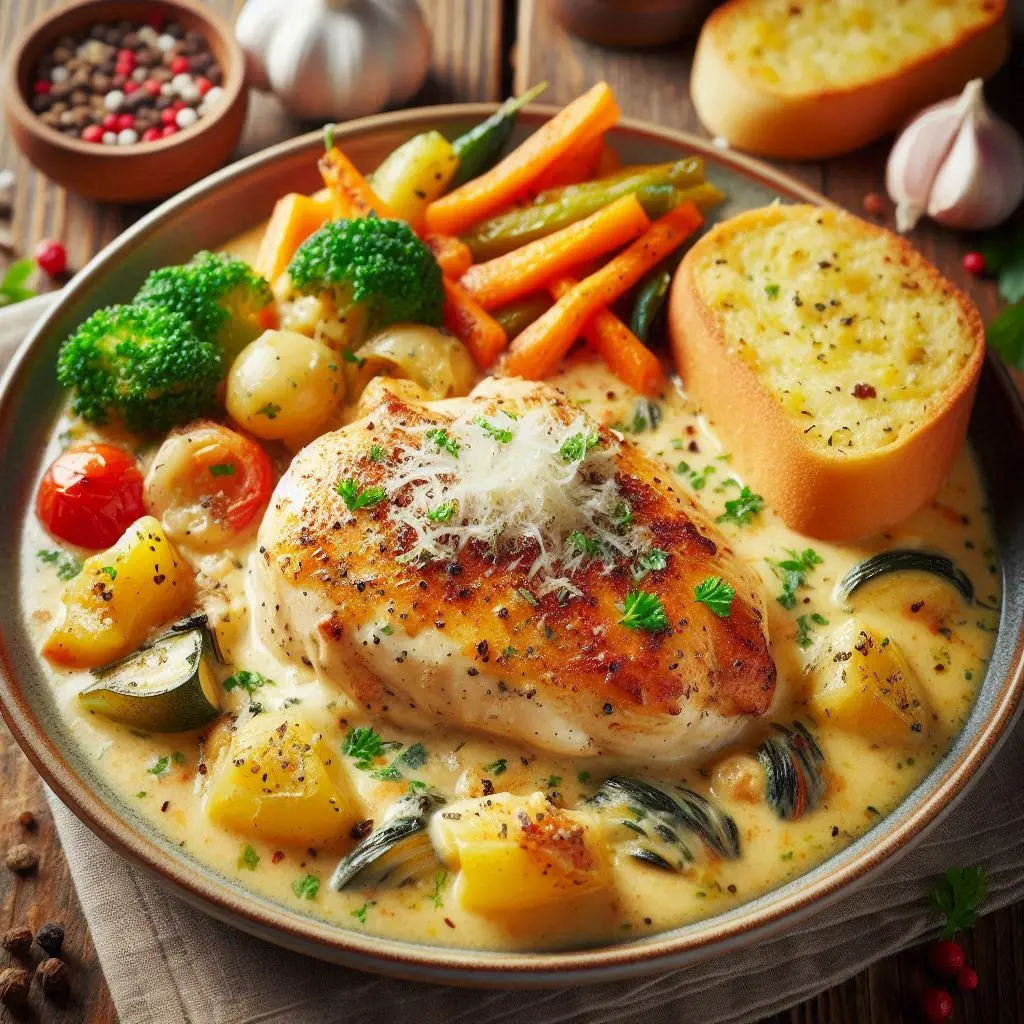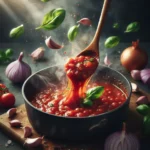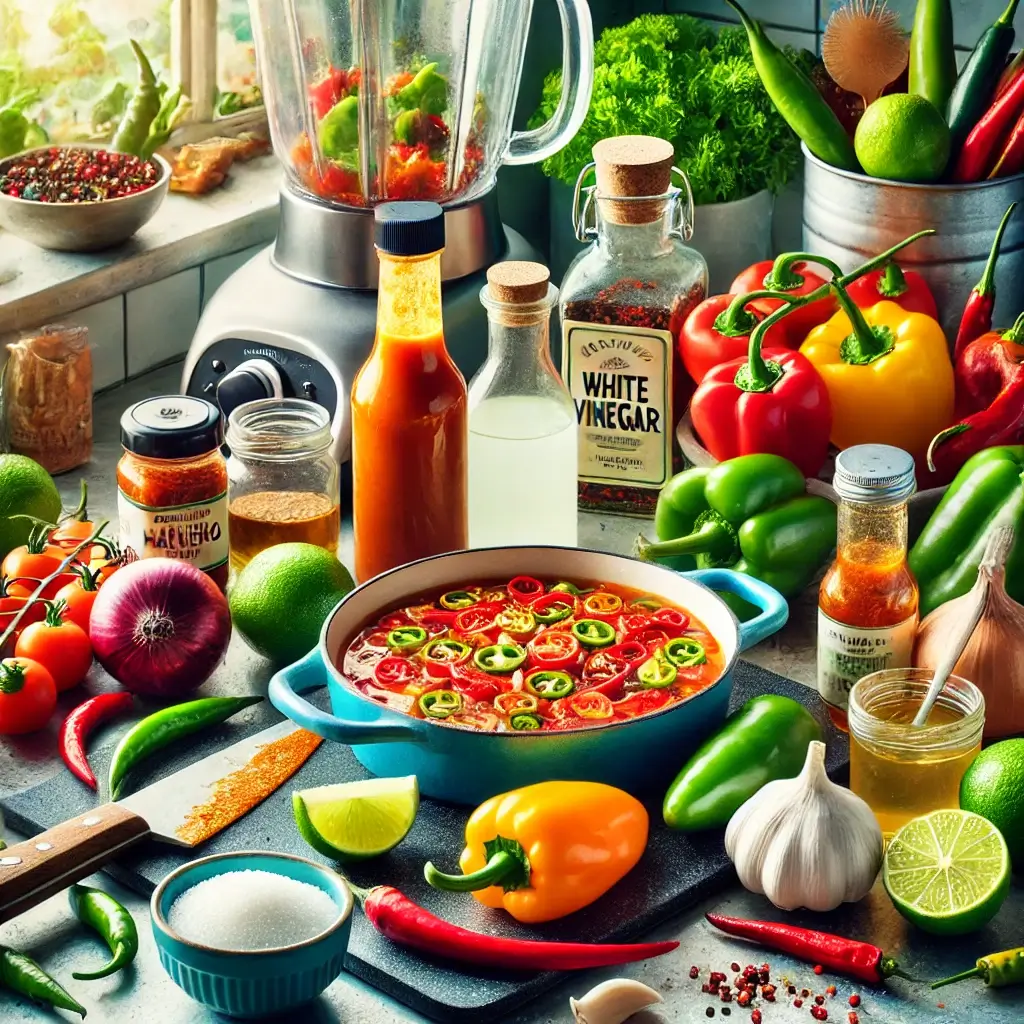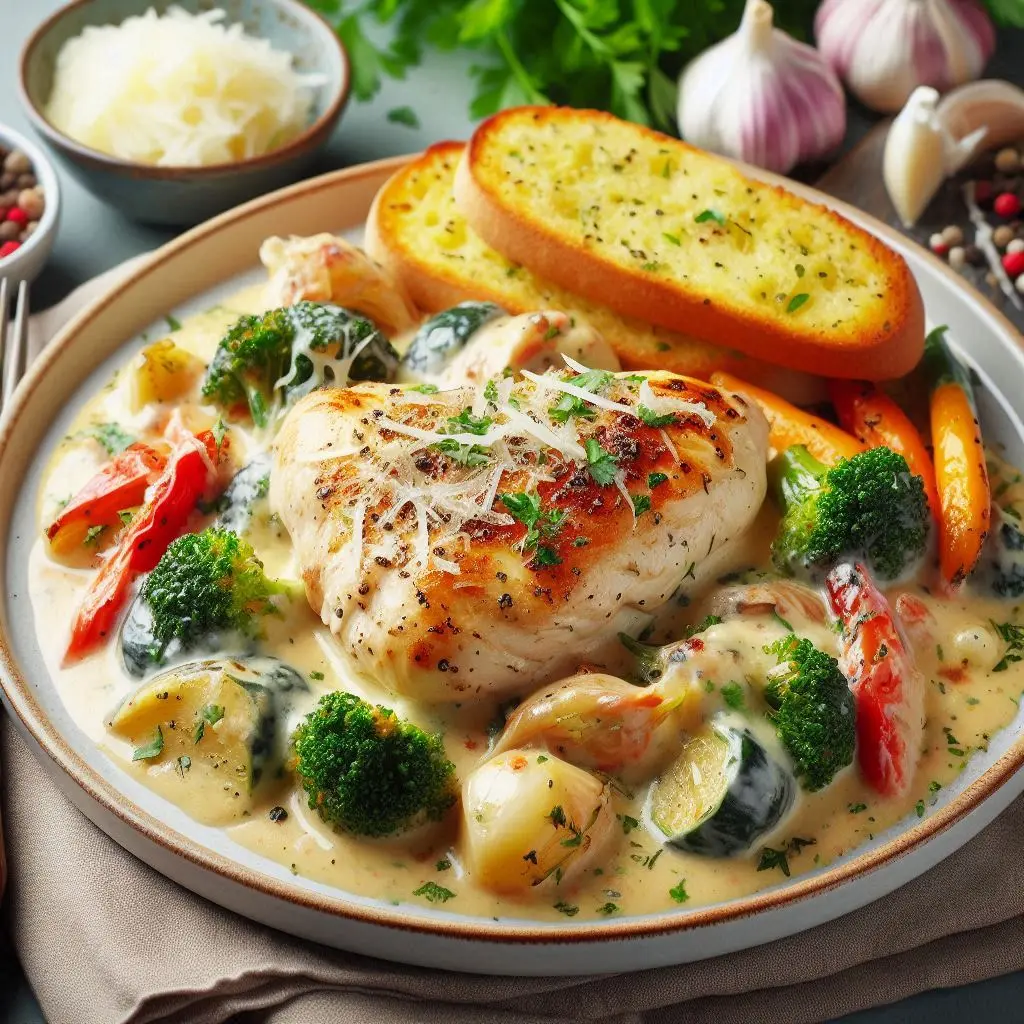
Table of Contents
Best Creamy Tuscan Chicken Recipe
Creamy Tuscan Chicken is a savory and decadent dish that combines tender chicken breasts with a rich, creamy garlic-Parmesan sauce, sun-dried tomatoes, and fresh spinach. With just a few simple ingredients, you can create a restaurant-quality meal right in your kitchen. This dish is perfect for a weeknight dinner or a special occasion, delivering a burst of flavor with every bite.
Ingredients:
- Chicken Breasts: 4 boneless, skinless
- Salt and Pepper: To taste
- Olive Oil: 2 tablespoons
- Butter: 2 tablespoons
- Garlic: 4 cloves, minced
- Sun-Dried Tomatoes: 1/2 cup, chopped (preferably oil-packed)
- Heavy Cream: 1 cup
- Chicken Broth: 1/2 cup
- Parmesan Cheese: 1/2 cup, freshly grated
- Baby Spinach: 2 cups
- Italian Seasoning: 1 teaspoon
- Crushed Red Pepper Flakes: Optional, for heat
- Fresh Basil: Chopped, for garnish
Instructions:
- Prepare the Chicken:
- Begin by seasoning the chicken breasts with salt, pepper, and Italian seasoning on both sides.
- Heat olive oil in a large skillet over medium-high heat. Add the chicken breasts and cook for 5-7 minutes per side, or until they are golden brown and fully cooked. Remove the chicken from the skillet and set aside on a plate.
- Prepare the Sauce Base:
- In the same skillet, lower the heat to medium and add the butter. Once melted, add the minced garlic and sauté for about 1 minute until fragrant.
- Stir in the chopped sun-dried tomatoes and cook for another 1-2 minutes to allow the flavors to meld.
- Create the Creamy Sauce:
- Pour in the chicken broth, stirring to deglaze the skillet and incorporate any flavorful browned bits from the bottom. Then, add the heavy cream and bring the mixture to a gentle simmer.
- Gradually whisk in the grated Parmesan cheese, stirring constantly until it melts completely into a smooth, creamy sauce. If the sauce appears too thick, you can add a bit more chicken broth or cream to reach the desired consistency.
- Incorporate Spinach and Chicken:
- Add the baby spinach to the skillet and stir gently until it wilts into the sauce. Return the chicken breasts to the skillet, spooning the creamy sauce over them to ensure they are fully coated.
- Allow the chicken to simmer in the sauce for an additional 5-7 minutes, which will help it absorb the flavors.
- Finish and Serve:
- Taste the sauce and adjust the seasoning with additional salt, pepper, or crushed red pepper flakes if desired. Garnish with freshly chopped basil before serving.
- Serve the Creamy Tuscan Chicken hot, accompanied by your favorite side dish.
Tips for Perfect Creamy Tuscan Chicken:
- Use Evenly Sized Chicken: To ensure that the chicken cooks evenly, you can pound the chicken breasts to an even thickness or slice them in half horizontally. This helps them cook faster and more uniformly.
- Choose High-Quality Ingredients: Opt for oil-packed sun-dried tomatoes for a richer flavor and softer texture. Freshly grated Parmesan cheese is also key for a smooth, creamy sauce.
- Adjust the Sauce Consistency: If the sauce is too thin, simmer it for a bit longer to thicken. For a thicker sauce, mix 1 teaspoon of cornstarch with 2 tablespoons of water and add it to the sauce, stirring continuously.
- Enhance the Flavor: Adding a dash of white wine to the sauce before the cream can provide an extra layer of flavor. You can also experiment with adding sliced mushrooms or artichoke hearts for added texture and variety.
Serving Suggestions:
- With Pasta: Serve the creamy chicken over pasta like fettuccine or penne to soak up the sauce.
- On a Bed of Rice or Mashed Potatoes: The creamy sauce pairs wonderfully with rice or mashed potatoes, making it a comforting, hearty meal.
- With a Side of Vegetables: Roasted or steamed vegetables, such as asparagus, broccoli, or green beans, make a great accompaniment.
Storing and Reheating:
Store any leftovers in an airtight container in the refrigerator for up to 3 days. To reheat, place the chicken and sauce in a skillet over low heat or in the microwave until warmed through. Add a splash of cream or chicken broth if the sauce has thickened too much during refrigeration.
Variations and Customizations:
- Add Vegetables: Enhance the dish with additional vegetables like mushrooms, bell peppers, or cherry tomatoes.
- Make it Spicy: Add more crushed red pepper flakes or a pinch of cayenne pepper for a spicy kick.
- Swap the Protein: Try this recipe with boneless, skinless chicken thighs, shrimp, or even salmon for a different twist.
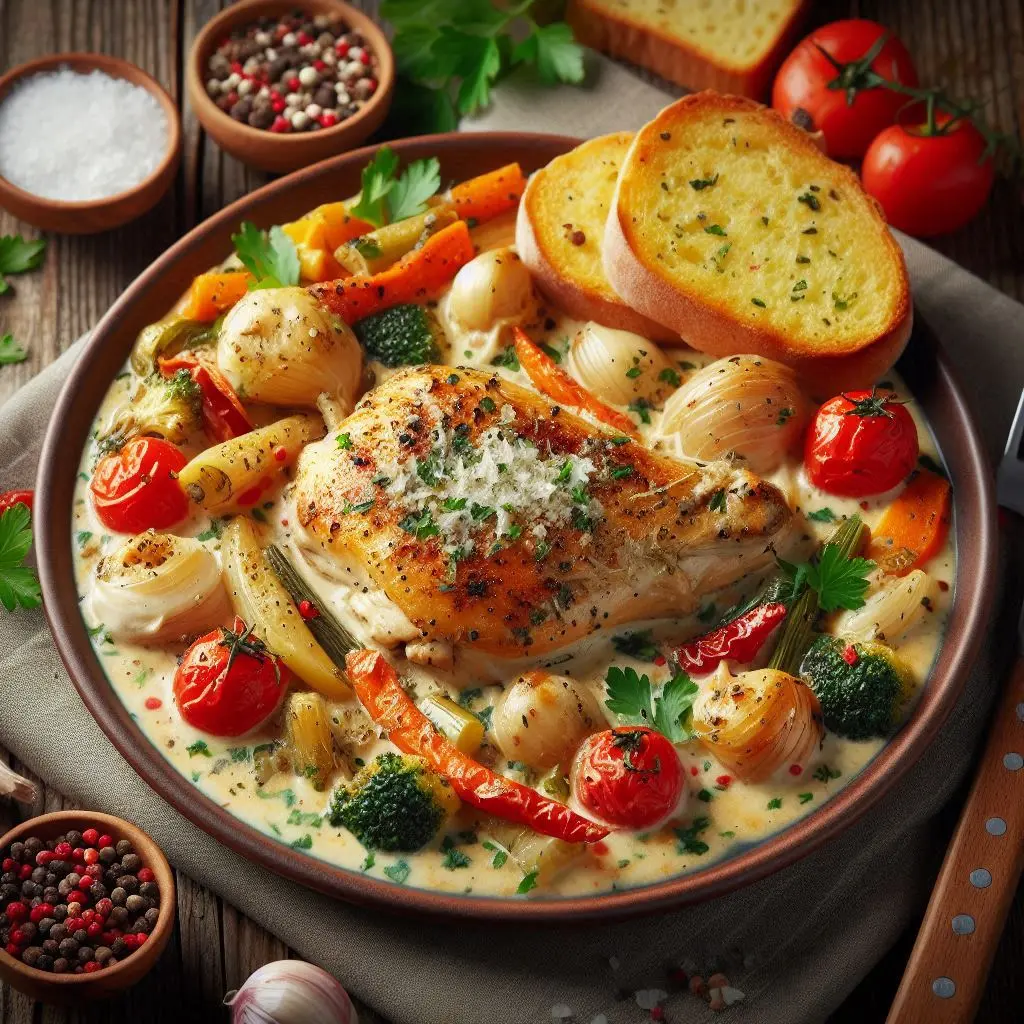

Conclusion:
Creamy Tuscan Chicken is a versatile, easy-to-make dish that’s full of flavor and perfect for any occasion. Whether you’re cooking for your family or hosting friends, this recipe is sure to impress. The combination of tender chicken, a luscious creamy sauce, and the robust flavors of sun-dried tomatoes and spinach will make it a favorite in your meal rotation. Serve it with pasta, rice, or vegetables, and enjoy a taste of Italy right at home!
How To Thicken Sauce(6 Types) – love a happy home (loveahh.com)

